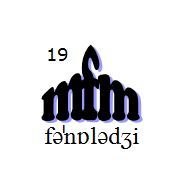
Manchester Phonology Meeting
This is an archive page; this conference occurred in May 2011.
The site for the 20mfm is available here.
 |
The 19th
Manchester Phonology Meeting |

|
With a special session
entitled...
featuring Paul Boersma, B. Elan Dresher,
Bruce Moren-Duollja and Jaye Padgett |
|
Thursday 19th -
Saturday 21st May 2011
|
|
Held at Hulme Hall, Manchester
|
|
Organised through a collaboration of phonologists
at the University of
Edinburgh, the University
of Manchester and elsewhere.
|

programme and information
|| travel and accommodation || registration + booking || special
session

 The final programme for the 19mfm is available here. This contains information about facilities at the conference venue and the restaurants for Thursday and Friday night.
The final programme for the 19mfm is available here. This contains information about facilities at the conference venue and the restaurants for Thursday and Friday night.
 The abstract booklet for the 19mfm is available here.
The abstract booklet for the 19mfm is available here.
Notes for poster-presenters: The poster displays will be set up on the evening before the poster session. You will have a space of about 5' (wide) x 3'9" (high) (152 cm wide x 114 cm high) for your poster. Each person presenting a poster will be provided with the means to affix their posters to the display board. Please feel free to bring handouts with you, so that those viewing your poster also have something to take away. Posters in previous years have taken a wide variety of forms, and there is no one single way to produce a good poster; the important things are that the font size is not too small, that it is easily readable and does not have too much text on it, that it sets out the main points that you want to argue for clearly, and maybe that it's eye catching, too. Some presenters bring one big poster which takes up all the space, others bring a series of A3 or A4 sheets of paper which can be fitted together on the poster board. During your poster session, you will be asked to stand by your poster (for at least a fair amount of the session) as conference participants walk around the displays, read your posters and ask you questions about them.

Travel and accommodation
Detailed
information on accommodation possibilities and on how to get to the
conference (with a selection of maps) are provided on separate pages:

Registration
and booking
As the advertised deadline has now passed, it is no longer possible to register for the 19mfm.
There will be a pre-conference get-together on Wednesday 18th from 8.30pm in the Lass O'Gowrie pub (36 Charles Street, M1 7DB), organised by Patrycja Strycharczuk.
For the evening of the 21st, Jill Beckman has organised a trip to the Genghis Khan Mongolian Barbecue restaurant; this needs to be booked in advance by emailing Jill (jill-beckman@uiowa.edu) by 16th May, with "Genghis Khan" in the subject line of your message.
There are also informal plans for a trip on Sunday 22nd to Lyme Park, where a variety of activities are possible: seeing the house and gardens, walking/hiking in the surrounding countryside, picnicking, taking afternoon tea. More will be decided about this during the conference - contact Yuni Kim for details.
Cancellation policy: we will endeavour to refund any fees paid if you cancel by 16th May. Any cancellations after 16th May may not able to be fully refunded as we will have committed to certain payments on your behalf.

Special session
A special themed session is being organised for Friday afternoon by
members of the organising committee and the advisory board. This will
feature invited
speakers, including those listed below, and will allow for open discussion when contributions from the audience will be very welcome.
 Paul Boersma (University of Amsterdam)
Paul Boersma (University of Amsterdam) B. Elan Dresher (University of Toronto)
B. Elan Dresher (University of Toronto) Bruce Moren-Duollja (CASTL, University of Tromso)
Bruce Moren-Duollja (CASTL, University of Tromso) Jaye Padgett (UC Santa Cruz)
Jaye Padgett (UC Santa Cruz)
Contrast in Phonology
One area of disagreement is the relevance of contrast to the
architecture of grammar and the course of phonological derivations. The

Organisers
Organising
Committee
The first named is the convenor and main organiser -
if you would like to attend or if you have any queries about the
conference, please feel free to get in touch with me
(patrick.honeybone@ed.ac.uk).
 Patrick
Honeybone (University
of Edinburgh)
Patrick
Honeybone (University
of Edinburgh)
 Ricardo
Bermudez-Otero (University
of Manchester)
Ricardo
Bermudez-Otero (University
of Manchester)
 Adam Albright
(MIT)
Adam Albright
(MIT) Jill
Beckman (Iowa)
Jill
Beckman (Iowa)  Paul
Boersma (Amsterdam)
Paul
Boersma (Amsterdam) Bert
Botma (Leiden)
Bert
Botma (Leiden) Mike
Davenport (Durham)
Mike
Davenport (Durham)  Stuart
Davis (Indiana)
Stuart
Davis (Indiana)  Mark Hale (Concordia)
Mark Hale (Concordia)  S.J.
Hannahs (Newcastle upon Tyne)
S.J.
Hannahs (Newcastle upon Tyne)  John
Harris (UCL)
John
Harris (UCL) Kristine
A.
Hildebrandt (Southern Illinois)
Kristine
A.
Hildebrandt (Southern Illinois) Martin
Kramer (Tromso)
Martin
Kramer (Tromso)  Yuni
Kim (Manchester)
Yuni
Kim (Manchester)  Nancy Kula
(Essex)
Nancy Kula
(Essex)  Aditi
Lahiri (Oxford)
Aditi
Lahiri (Oxford)  Marc
van Oostendorp (Meertens & Leiden)
Marc
van Oostendorp (Meertens & Leiden) Catherine
O. Ringen (Iowa)
Catherine
O. Ringen (Iowa) Tobias Scheer
(Nice)
Tobias Scheer
(Nice)  James M.
Scobbie (QMU)
James M.
Scobbie (QMU)  Daniel
Silverman (San Jose State)
Daniel
Silverman (San Jose State) Jochen Trommer (Leipzig)
Jochen Trommer (Leipzig) Christian
Uffmann (Sussex)
Christian
Uffmann (Sussex) Marilyn
M. Vihman (York)
Marilyn
M. Vihman (York)

The site is hosted
by the Department of
Linguistics and English Language at the University of
Edinburgh.
Page created by Patrick
Honeybone
Last updated May 2011